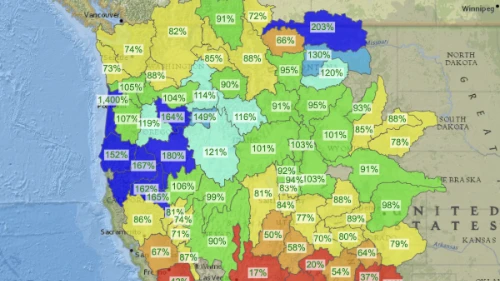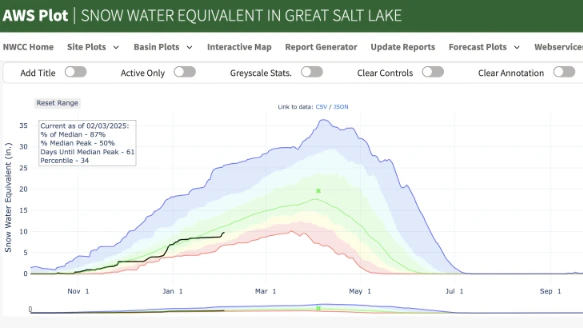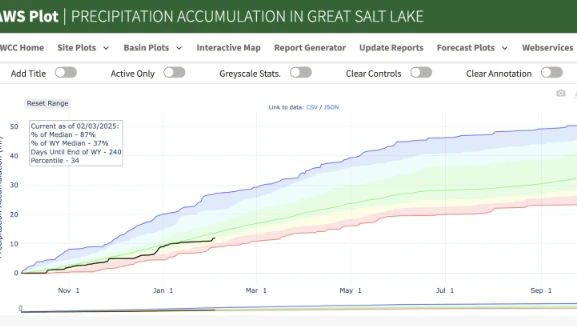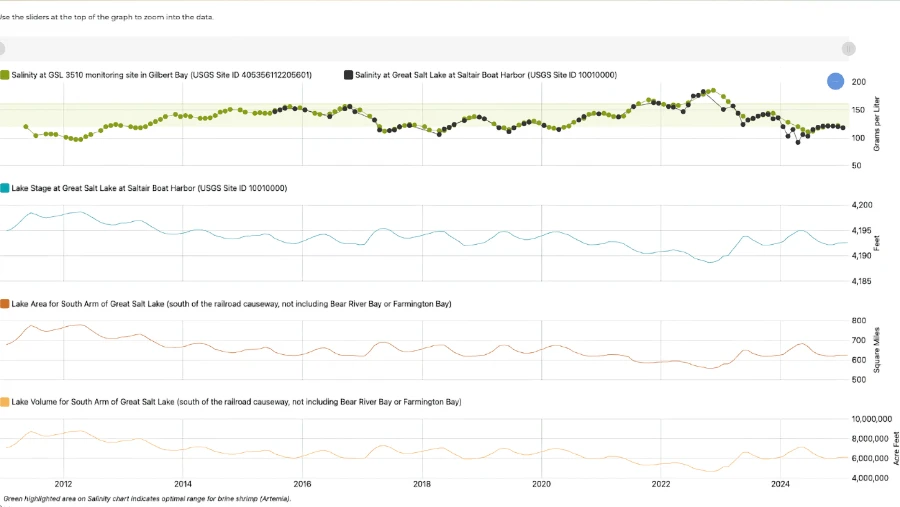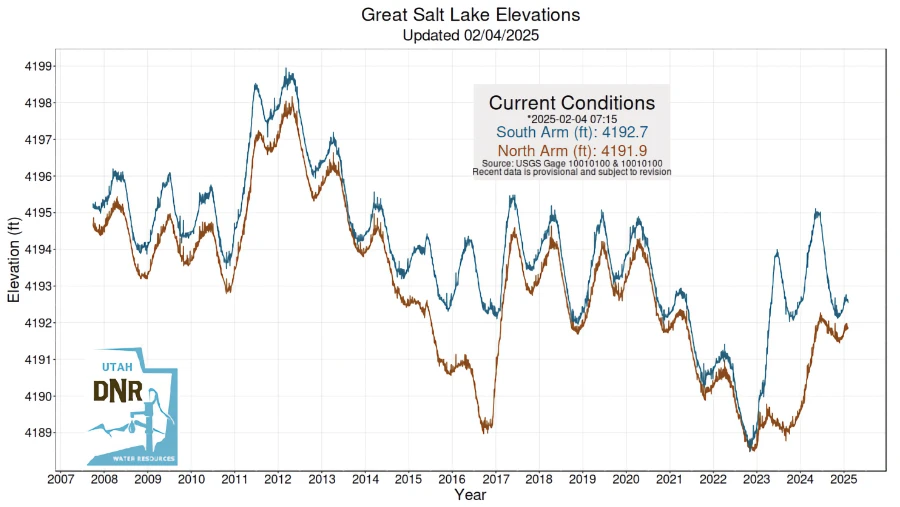Great Salt Lake Tracker
Follow the status of the largest saline lake in North America
Great Salt Lake water level data comes from USGS monitoring stations at the Saltair Boat Harbor and at Saline, UT. These data are averaged for the previous day at midnight each day, which is why our tracker displays yesterday’s date.
0
feet below the minimum healthy level
0
of the lakebed is exposed
Great Salt Lake’s minimum healthy water level is 4,198’.
Compared to the lake area at its natural elevation of 4,207’.
0
square miles of exposed lakebed
0
Full
More exposed lakebed reduces habitat and increases dust storms
Compared to the lake volume at its natural elevation of 4,207’.
0
Salinity
12-16% salinity is ideal for brine shrimp.
Great Salt Lake Water Level
0
South Arm Elevation
0
North Arm Elevation
The South Arm of Great Salt Lake is measured from the USGS monitoring station at Saltair Boat Harbor. This measurement is usually what is looked at when considering the health of the lake. The minimum healthy level is 4198′ above sea level
The North Arm of Great Salt Lake is measured at the USGS monitoring station at Gilbert Bay.
Links to Other Resources
Data Sources
Explore the snow, soil moisture, and reservoir storage in the Great Salt Lake basin.
Snow water equivalent shows the amount of water contained in the snowpack. This chart shows the current conditions for the whole Great Salt Lake watershed.
This chart shows the cumulative amount of rain and snow in the Great Salt Lake watershed for the hydrological year.
Other Dashboards
The Great Salt Lake Hydromapper is a resource from the USGS that shows changes in lake level, volume, and salinity over time. It also has information about other health indicators for the lake.
The Utah Department of Natural Resources has also created a dashboard with links to various sources of Great Salt Lake data.

